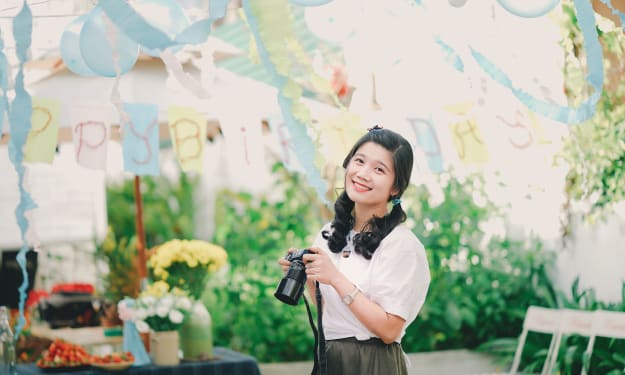In Photography, What is Auto ISO?
And How Do You Use It?

As I have explained in other articles, ISO is part of the exposure triangle which determines how bright or dark your image is. If you haven’t read those, there are links at the end of this article, but read on.
Aperture is how large the hole that lets light in, shutter speed is how long that hole stays open and ISO is how sensitive to light the sensor is. I have read articles that argue that this isn’t technically how ISO works in a digital camera, but for the purposes of understanding exposure, that doesn’t matter. High ISO means more light; low ISO means less light.
Traditionally, whether you were using any of the creative modes on the camera, aperture priority, shutter priority, or manual, you might change ISO as the light changed. Mostly, you want as low an ISO as possible as that will reduce digital noise.
But as you move inside where the light is less, you may have to raise the ISO to compensate for it, unless you are shooting on a tripod where a slow shutter speed might be a better choice. I say might be, because if there are people moving about in your image, too slow a shutter speed would blur that movement. Whether this is a good or bad thing is up to the photographer.
Regardless, as the light conditions changed, you would raise or lower the ISO to make sure you were able to capture the image. One problem that comes from that, and I have done this many times, is forgetting to change it back. I’m in city shooting exteriors, then move inside a dark church. I have to bump the ISO up to 1600, 3200, or even higher to get the shot. Then I go back outside, forgetting to move it back down to a lower setting.
Best case, because I shoot in aperture priority, I am immediately presented with an astronomically high shutter speed, which makes me realize what I have don. Worst case, I go merrily about my business shooting images which will be very noisy, for no reason.
Also, the other two factors, aperture and shutter speed, offer other benefits and effects besides just controlling the light. But ISO does nothing for you besides controlling the exposure unless you want a lot of noise. Perhaps you are shooting some vintage black and white and want to emulate the grain of high ASA film.
But modern cameras have a setting called Auto ISO. When used properly, it can make photography much simpler because you are back to controlling only the two principal factors, aperture and shutter speed. When shooting in aperture priority, I choose the aperture and the camera picks an appropriate shutter speed. When shooting in shutter priority, the opposite is true.
Enter Auto ISO. At its most basic level, you tell the camera to pick whatever ISO it thinks is appropriate. In this way, as you move into and then back out of a dark shooting environment, you don’t have to worry about changing ISO — the camera does this for you.
The problem with this is, the camera will frequently pick a much higher ISO than necessary, then overcompensating with noise reduction. Phone cameras are notorious for this. Or if you are shooting in raw or have noise reduction turned off in camera (and you should), you will get a noisier image than perhaps you need to.
For this reason, newer cameras let you select limits on how Auto ISO works. Refer to your camera’s manual, as they are all different. But you can set a limit on how high the ISO can go. This can prevent the image from getting too noisy. Determine what is the highest ISO you are comfortable shooting with, and place that as the upper limit. On my camera, I can also set the default ISO, which is always 100 for me.
In many cameras, you can also choose the slowest shutter speed the camera will choose. I ran into this in the early days of trying Auto ISO. I go into that dark church, knowing the camera will choose the ISO for me. Since I am shooting aperture priority, it also chooses the shutter speed. Click. My picture is blurry, because the camera used a shutter speed that was too slow. This is entirely my fault as you should always double-check the settings before pressing the shutter button, but I had relied too heavily on the auto part of Auto ISO.
Even better, most cameras will let you create sets of Auto ISO limits. I have three on my camera. One for every day, walking around shooting. For that setting, I have an upper limit on ISO at 800, the default at 100, and the slowest shutter speed at 1/250th. These are pretty tight parameters. But it means when I’m outside shooting, I only have to think about my aperture and my exposure will always be good.
My next Auto ISO setup is for cloudy days or when I shoot in a lot of shadows, such as in the city or forest. For this, my default ISO is 400, the max is 6400, and the minimum shutter speed is 1/60th. I know I can get sharp images with all of my lenses at that shutter speed, and the ISO range will keep me in a good exposure range for the conditions.
My last setting is for the worst-case scenario. I am shooting in a dark place. For that, my default is 800, max is 12,800, and shutter speed is 1/15th. I know that with my camera, ISO over 12,800 is just unacceptable. I also know that with any of my lenses with stabilization, I can handhold at 1/15th.
If your camera has Auto ISO, you should definitely try it out. It doesn’t prevent you from manually changing things as needed, but gives you an extra safety net to make sure you nail the image.

About the Creator
Darryl Brooks
I am a writer with over 16 years of experience and hundreds of articles. I write about photography, productivity, life skills, money management and much more.






Comments
There are no comments for this story
Be the first to respond and start the conversation.